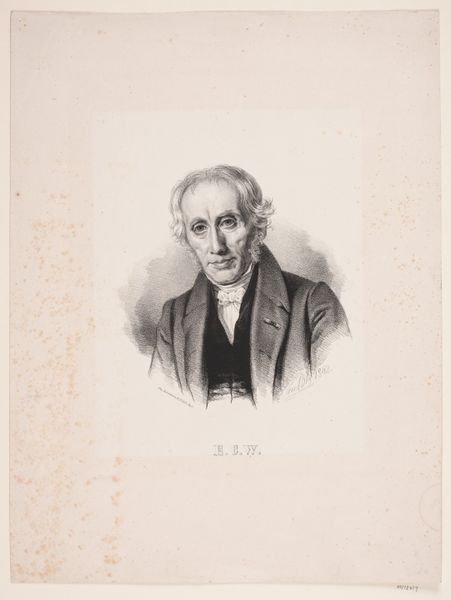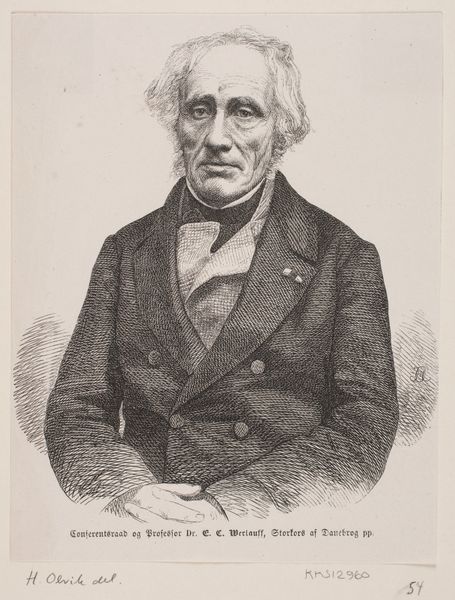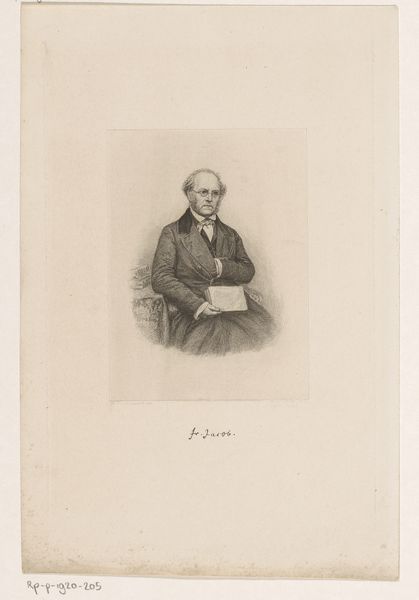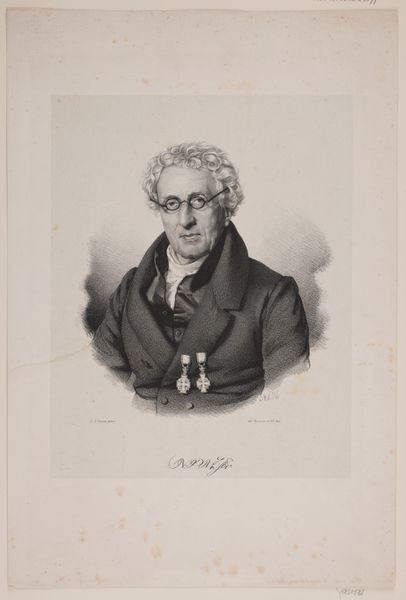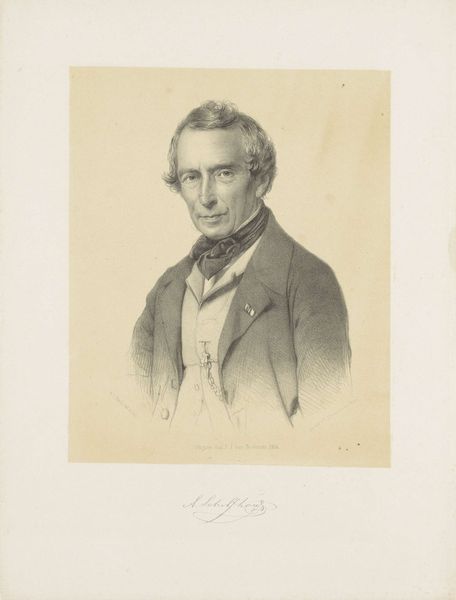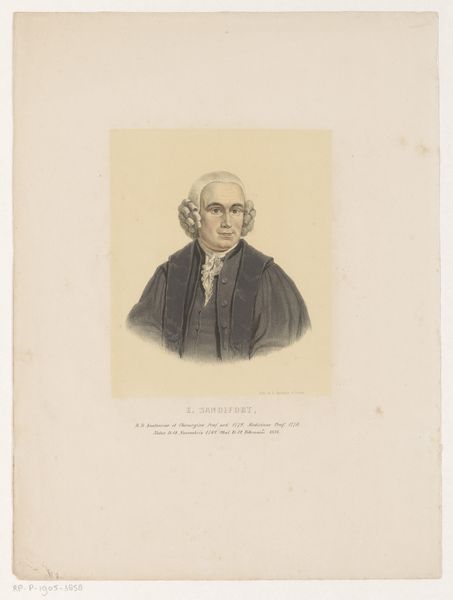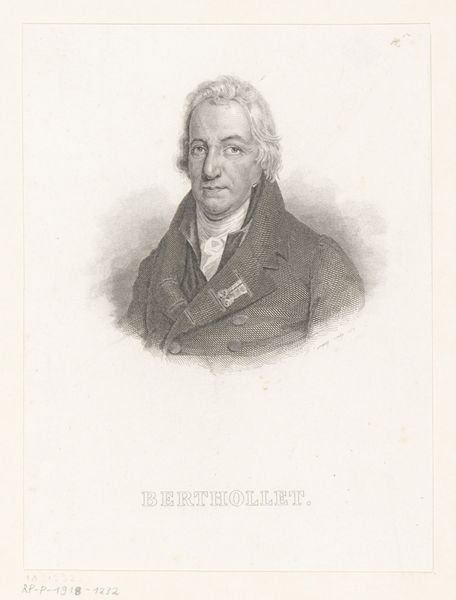
lithograph, print
#
portrait
#
lithograph
# print
#
portrait reference
#
portrait drawing
#
genre-painting
#
realism
Dimensions: 348 mm (height) x 267 mm (width) (bladmaal)
Curator: Look at this lithograph, "E. C. Werlauff," created by Emil Ditlev Bærentzen in 1843. What strikes you first about it? Editor: It's the gravity in his gaze. It's piercing, yet also conveys a sense of weariness. The monochrome adds to this austere mood, a stark realism typical of the time. Curator: I agree. Bærentzen truly captured a solemn moment. Werlauff, judging by his formal attire, was a man of importance, a man immersed in societal norms... maybe feeling the pressure of them too. I imagine Werlauff was used to similar portraiture, but I also imagine that it felt intimate and unusual to have his portrait done this way! Editor: And think about lithography at that time. The medium democratized portraiture to an extent. While still not as widely accessible as photography would become, it was certainly more affordable than having one's likeness rendered in paint. This act already disrupts who and why a portrait would get done. It prompts the question: was Werlauff consciously participating in the emerging bourgeois public sphere? Curator: That's such a good point about the context of its production and its ability to subvert the norm. The detail Bærentzen achieved is quite remarkable, really capturing the textures of his clothing. His jacket looks smooth, juxtaposed by the intricately decorated collar. Editor: It reflects an interesting tension, doesn't it? The trappings of bourgeois respectability, the severe expression—but also, those softer, almost romantic touches. Bærentzen's skill emphasizes that internal dichotomy. Is this how Werlauff wants to be seen? How Bærentzen sees him? Curator: Yes! The emotional texture of the drawing, combined with its socio-political framework… It offers this really complex dialogue between self-perception, representation, and the gaze. The dialogue itself feels subversive because of how the artwork manages to elicit and present such diverse opinions! Editor: Absolutely, a moment captured in ink and stone that still speaks volumes. What do you think, Werlauff?
Comments
No comments
Be the first to comment and join the conversation on the ultimate creative platform.
